- Sorry, this product is unavailable.
-

The Holy Fox: Andrew Roberts
$95.00The life of Lord Halifax, remembered as the architect of the policy of achievement of Nazi Germany. His meeting with Hitler in 1937 was a milestone in appeasement yet just days before the 1938 Munich conference, Halifax repudiated the policy and demanded the destruction of Nazism. By May 1940, it was he rather than Churchill who was the choice for Britain's war leader. His public life also included Viceroy of India from 1926 - 31 and a deal with Gandhi that ended the Civil Disobedience campaign before it could force the British to quit. -

Kokoda: Peter Fitzsimons
$12.00The Kokoda Track is the symbol of World War II for Australians. This book takes readers up that tortuous track and into battle with the young men who fought there, following in the footsteps of heroes and villains as they climb the endless mountain ranges, dig into defend, charge into battle or begin the long, desperate and bloody trek to safety. Here can also be found the perspective of the Japanese troops and the extraordinary local people who the Diggers called 'angels'.
-

For the first time since the early sixties there is widespread and growing concern about the possibility of a Third World War, given the massive stockpile of nuclear armaments and the growing tensions between superpowers. The author, the grandson of Winston Churchill, shows how this situation has arisen and provides the facts and figures to ensure a true understanding of the issues at stake. What is the balance of armed power in the world today? What are the chances of either side winning a nuclear war? How should the Western Allies respond to the growing global challenge from Russia? These and more questions are answered - the answers echo the warnings that were made about the threat from Nazi Germany. Those warnings went unheeded.
-

The author assesses and explains the role of Goering, dismissing the popular image of the corrupt and indolent buccaneer in order to show the central and serious political role that Goering played in the Third Reich. He shows all facets of Goering's personality, as well as the political context in which he exercised so much power.
-

It was at Dunkirk that Toosey's charisma and fortitude were first noted and in 1941 he was given command of an artillery regiment. Sent to fight in the Far East he and his men were embroiled in the battle for Singapore and were taken prisoner after the island's fall in 1942. The Japanese, scornful of the Allied forces for surrendering, determined to make use of the new workforce now at their disposal. Toosey was sent to Thailand to command the 'bridge camp' at Tamarkan where he was ordered to supervise the construction of two railway bridges over the river Khwae Mae Khlong. Starvation rations and harsh working conditions mean that dysentery and cholera were rife and a quarter of the 60,000 prisoners working on the Burma Railway wold perish. Toosey insisted on high standards of hygiene and discipline, giving back the men their self-respect and making himself a buffer for the cruel excesses if the guards. The author is Toosey's grand-daughter. Illustrated with black and white photographs and sketches.
-
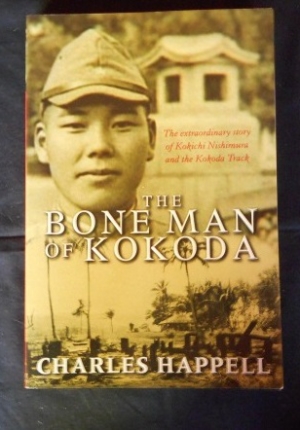
Kokichi Nishimura was a member of the 2nd battalion, 144th regiment of the Japanese Imperial Army. In 1942 he fought every foot of the Kokoda Track as the Japanese attempted to take Port Moresby and was the only man from his platoon to survive the campaign. Finally he retreated, wounded and starving, leaving thousands of his comrades buried in shallow graves along the Track. He promised that he would one day return to them and bring them home to Japan for proper burial. He married, had three children and started an engineering business which prospered. But his driving ambition was to return to New Guinea to keep his promise. In 1979, nearing retirement age, he shocked his family by giving his business to his sons, his house and all his assets to his wife and he returned to New Guinea to begin his search for the remains of Japanese soldiers. For the next 25 years Nishimura lived alone in huts and tents along the Kokoda Track and using a mattock, a shovel, a metal detector and an indomitable will, he found the bones of hundreds of his comrades and also forged a new comradeship and new purpose in helping the poverty-stricken Papuans he worked amongst. An incredible story. Illustrated with black and white photographs.
-
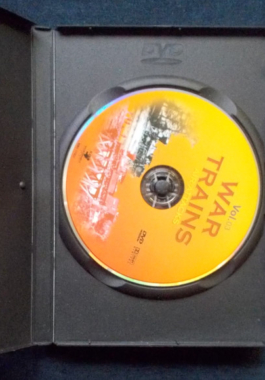
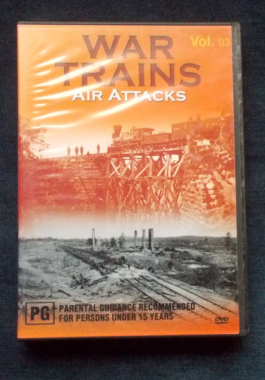 Volume 3 of the award winning series that covers the dynamic history of the railroads during warfare from the American Civil War to World Wars I and II, Korea and Vietnam. Whether under full attack or evacuating the wounded, the trains kept running.
Volume 3 of the award winning series that covers the dynamic history of the railroads during warfare from the American Civil War to World Wars I and II, Korea and Vietnam. Whether under full attack or evacuating the wounded, the trains kept running. -

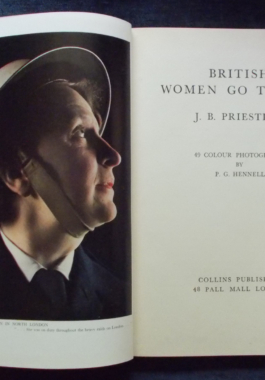 An on-the-spot record of what the women of England were doing in World War II : The land army, civil defence, munitions, communications, the home war effort and the domestic and economic consequences of women doing jobs that had been in the traditional male domain. Full of handsome colour plates by P.C. Hennel showing this band of determined women: servicing guns on a torpedo boat, dispatch riding, changing sparking plugs on a training aircraft, handling the barrage balloon, fitting the cowling to the motor of a Halifax bomber and extinguishing an explosive incendiary bomb. A real piece of history.
An on-the-spot record of what the women of England were doing in World War II : The land army, civil defence, munitions, communications, the home war effort and the domestic and economic consequences of women doing jobs that had been in the traditional male domain. Full of handsome colour plates by P.C. Hennel showing this band of determined women: servicing guns on a torpedo boat, dispatch riding, changing sparking plugs on a training aircraft, handling the barrage balloon, fitting the cowling to the motor of a Halifax bomber and extinguishing an explosive incendiary bomb. A real piece of history. -
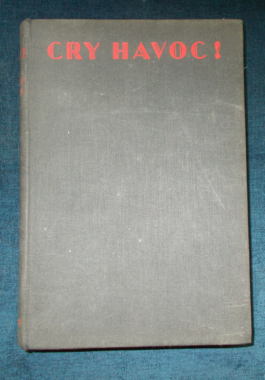
Cry Havoc! Beverley Nichols
$45.00Written in 1933, this book caused furor in many quarters. It's a far cry from Nichols' usual light-hearted badinage, being a bitter denunciation of the world's attitude toward peace and war and a thorough research into the activities of offensive preparations going on in the armament factories in England and on the Continent. It also covers the ineffectual preparations being made for defensive measures. Faced with the fact that war was brewing, the League of Nations was rendered virtually impotent through the media of the day and public opinion and that the civilian population is certain to be the victim in the next European War, his findings are far from negligible. The last half of the book is a succession of challenging dialogues, in which socialism, capitalism, militarism and pacifism are all given ardent advocates. Time and events demonstrated that Nichols predicted how World War II would proceed with uncanny 99% accuracy.


